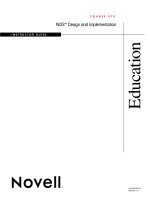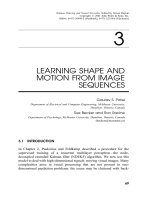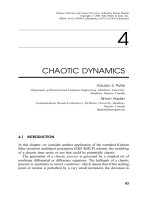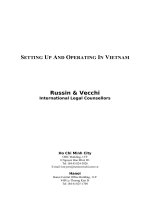Tài liệu Central Asia and Its Asian Neighbors doc
Bạn đang xem bản rút gọn của tài liệu. Xem và tải ngay bản đầy đủ của tài liệu tại đây (306.63 KB, 64 trang )
This document and trademark(s) contained herein are protected by law
as indicated in a notice appearing later in this work. This electronic
representation of RAND intellectual property is provided for non-
commercial use only. Permission is required from RAND to reproduce, or
reuse in another form, any of our research documents.
Limited Electronic Distribution Rights
Visit RAND at www.rand.org
Explore RAND Project AIR FORCE
View document details
For More Information
This PDF document was made available
from www.rand.org as a public service of
the RAND Corporation.
6
Jump down to document
THE ARTS
CHILD POLICY
CIVIL JUSTICE
EDUCATION
ENERGY AND ENVIRONMENT
HEALTH AND HEALTH CARE
INTERNATIONAL AFFAIRS
NATIONAL SECURITY
POPULATION AND AGING
PUBLIC SAFETY
SCIENCE AND TECHNOLOGY
SUBSTANCE ABUSE
TERRORISM AND
HOMELAND SECURITY
TRANSPORTATION AND
INFRASTRUCTURE
WORKFORCE AND WORKPLACE
The RAND Corporation is a nonprofit
research organization providing
objective analysis and effective
solutions that address the challenges
facing the public and private sectors
around the world.
Purchase this document
Browse Books & Publications
Make a charitable contribution
Support RAND
This product is part of the RAND Corporation monograph series.
RAND monographs present major research findings that address the
challenges facing the public and private sectors. All RAND mono-
graphs undergo rigorous peer review to ensure high standards for
research quality and objectivity.
Rollie Lal
Prepared for the United States Air Force
Approved for public release; distribution unlimited
Central Asia and Its
Asian Neighbors
Security and Commerce
at the Crossroads
The RAND Corporation is a nonprofit research organization providing
objective analysis and effective solutions that address the challenges
facing the public and private sectors around the world. RAND’s
publications do not necessarily reflect the opinions of its research clients
and sponsors.
R
®
is a registered trademark.
© Copyright 2006 RAND Corporation
All rights reserved. No part of this book may be reproduced in any
form by any electronic or mechanical means (including photocopying,
recording, or information storage and retrieval) without permission in
writing from RAND.
Published 2006 by the RAND Corporation
1776 Main Street, P.O. Box 2138, Santa Monica, CA 90407-2138
1200 South Hayes Street, Arlington, VA 22202-5050
4570 Fifth Avenue, Suite 600, Pittsburgh, PA 15213
RAND URL: />To order RAND documents or to obtain additional information, contact
Distribution Services: Telephone: (310) 451-7002;
Fax: (310) 451-6915; Email:
Library of Congress Cataloging-in-Publication Data
Lal, Rollie.
Central Asia and its Asian neighbors : security and commerce at the crossroads /
Rollie Lal.
p. cm.
“MG-440.”
Includes bibliographical references.
ISBN 0-8330-3878-8 (pbk. : alk. paper)
1. Asia, Central—Relations—Asia. 2. Asia—Relations—Asia, Central. 3. Asian
cooperation. 4. Asia—Relations—United States. 5. United States—Relations—Asia.
I. Title.
DS33.4.A783L35 2006
327.7305—dc22
2005031207
Cover photograph by Rollie Lal
The research described in this report was sponsored by the United States
Air Force under Contract F49642-01-C-0003. Further information may
be obtained from the Strategic Planning Division, Directorate of Plans,
Hq USAF.
Caspian
Sea
Leke
Balkhash
Pakistan
Qandahar
Herat
Mashhad
Mary
Charjew
Bukhoro
Samarqand
Osh
Tarim He
Katun’
Ob’
Irtysh
Esil
lle
Kuqa
Yining
Zaysan
Tomsk
Novosibirsk
Ayagoz
Lepsi
Shu
Balqash
Esil
Urganch
Nukus
Dashhowuz
Turkmenbashi
Qarshi
Ufa
Shalqar
Tyumen'
Y
a
z
d
Shymkent
Taldygorghan
Oskemen
Oaraghandy
Koksnetau
Petropavl
Surgut
Qostanay
Chelyabinsk
Arqalyq
Zhezqazghan
Qyzylorda
Aral
Aqtobe
Samara
Magnitogorsk
Penza
Kirov
Izhevsk
Oral
Aqtau
Beyneu
Pavlodar
Omsk
Almaty
Ashgabat
Tashkent
Kabul
Dushanbe
Bishkek
Islamabad
Astana
Baku
Tehran
Iran
Zhayyq
Amu Darya
Syrdariya
Ural
Tobol
Afghanistan
Central Asia
Kazakhstan
Russia
Turkmenistan
Uzbekistan
China
India
Kyrgyzstan
Tajikistan
Mazar-e Sharif
Atyrau
Volga
Kama
Aral
Sea
Barnaul
0
0
200
200
400 km
400 miles
Khujand
v
Preface
The countries of Central Asia are greatly influenced by their Asian
neighbors. Much analysis has been put forth on the issue of the rela-
tions between the Central Asian states and Russia, but the countries
to the south and east, including China, Iran, Afghanistan, India, and
Pakistan, also have a powerful but less understood effect on the Cen-
tral Asian states’ security and economic interests.
1
This monograph assesses the mutual interests of the Central
Asian states and their Asian neighbors, and considers the implications
of these interests for the United States. It also looks at the role of rela-
tions between the states of the region in this context, and at the role
of multinational organizations such as the Shanghai Cooperation Or-
ganization (SCO). This monograph should be of interest to policy-
makers and analysts involved in international security and U.S. for-
eign policy.
The analysis in this monograph is informed by a yearlong re-
search effort, which included travel to the region and extensive inter-
views with U.S., regional, and global specialists; government officials;
and others. It involved a multidisciplinary team of researchers who
sought to combine their understanding of politics, economics, and
military strategic analysis to bring fresh perspectives to the questions
at hand.
This monograph is one of several reporting the results of the re-
search effort. Other documents address political structures and par-
____________
1
See Burghart and Sabonis-Helf (2004); Oliker and Shlapak (2005).
vi Central Asia and Its Neighbors: Security and Commerce at the Crossroads
ticipation; religion, ethnicity, and clans; and economic development.
In addition, a broad overview monograph, U.S. Interests in Central
Asia: Policy Priorities and Military Roles, draws on the material in all
of these assessments to define future requirements and approaches to
the region. Each of these will be published separately, forthcoming
from RAND.
The research reported here was sponsored by AF/XOX and con-
ducted within the Strategy and Doctrine Program of RAND Project
AIR FORCE. Comments are welcome and may be directed to the
authors and to Andrew Hoehn, director of Project AIR FORCE’s
(PAF’s) Strategy and Doctrine Program. Until late 2003, the then-
director of PAF’s Strategy and Doctrine program, Dr. Edward
Harshberger, provided leadership and support. Research for this re-
port was completed in May 2005.
RAND Project AIR FORCE
RAND Project AIR FORCE (PAF), a division of the RAND Corpo-
ration, is the U.S. Air Force’s federally funded research and develop-
ment center for studies and analyses. PAF provides the Air Force with
independent analyses of policy alternatives affecting the development,
employment, combat readiness, and support of current and future
aerospace forces. Research is conducted in four programs: Aerospace
Force Development; Manpower, Personnel, and Training; Resource
Management; and Strategy and Doctrine.
Additional information about PAF is available on our web site at
/>vii
Contents
Central Asia Frontispiece
Preface
v
Summary
ix
Acknowledgments
xiii
Abbreviations
xvii
CHAPTER ONE
Introduction 1
CHAPTER TWO
China 3
China’s Uighur Minority
4
Regional Cooperation
6
The U.S. Role
9
CHAPTER THREE
Iran 11
Regional Cooperation
13
The U.S. Role
16
CHAPTER FOUR
Afghanistan 19
The U.S. Role
22
viii Central Asia and Its Neighbors: Security and Commerce at the Crossroads
CHAPTER FIVE
Pakistan 23
The U.S. Role
27
CHAPTER SIX
India 29
Regional Cooperation
30
The U.S. Role
34
CHAPTER SEVEN
Conclusions: Implications for U.S. Interests 35
Bibliography
37
ix
Summary
The Asian states neighboring Central Asia have historic links and
strong interests in the region. China, Iran, Afghanistan, India, and
Pakistan are critical players in the security and economic issues that
will determine the future of Central Asia and affect U.S. interests in
the region. All of these states are of importance to the United States,
whether due to the war on terrorism, economic ties, arms control,
nonproliferation, or other reasons. China, Iran, and India have all
aggressively sought to build trade ties to and through Central Asia,
and China and India have also invigorated security cooperation. But
regional states are concerned about the situation in Afghanistan,
which they fear might lead to a spillover of conflict onto their soil,
and they also fear the possibility of Pakistani activity and influence,
which has led them to keep that state at arm’s length.
China has indicated that security is a primary interest in the re-
gion through its initiative in establishing the Shanghai Cooperation
Organization (SCO) with Kazakhstan, Uzbekistan, Kyrgyzstan, Taji-
kistan, and Russia (pp. 6–7). Concerns regarding China’s Muslim
Uighur separatists, as well as concerns of U.S. encirclement, underpin
China’s efforts to promote regional security cooperation (pp. 4–6,
9–10). China has also moved aggressively to expand its economic in-
terests in the region through commodity trade and agreements to im-
port oil via pipeline from Kazakhstan (pp. 7–8).
Iran has a similar perspective toward its Central Asian neigh-
bors. Stability in Afghanistan lies at the heart of Iran’s concerns, as
the Taliban has historically been anathema to Iran (p. 12). Iran main-
x Central Asia and Its Neighbors: Security and Commerce at the Crossroads
tains that an international, United Nations–led military presence
should remain in Afghanistan to prevent a deterioration of the secu-
rity situation (pp. 11–12). However, U.S. presence there and in Cen-
tral Asia creates concern in Iran that U.S. intentions are to surround
and isolate Iran rather than enhance regional security (p. 16). To in-
crease its leverage in the region, Iran is developing economic links
with each country in Central Asia. Transport links are another impor-
tant initiative, with routes being developed via Afghanistan, con-
necting Iranian ports and landlocked Uzbekistan (pp. 13–16).
India shares Iran’s concerns regarding the threat of militants
based in Afghanistan. However, India welcomes U.S. presence in the
region as a stabilizing influence (p. 34). Economic ties are growing,
and India is developing transport and energy links to the region via
Iran and Afghanistan (pp. 33–34). The Central Asian states have
close relations with India dating to the years of the Soviet Union and
the Afghan war, a history that negatively affects their relations with
Pakistan.
Pakistan’s relations with Central Asia suffer from lingering
memories in the region of Pakistan’s role in supporting the Taliban
and Islamic militancy in general. Uzbekistan, Tajikistan, and
Kyrgyzstan all remain suspicious of Pakistan’s regional intentions,
and trade with Pakistan has been weak as a result (p. 25). The estab-
lishment of the Karzai government in Kabul has been a blow to Paki-
stan’s regional security strategy. Whereas the Taliban regime would
have been friendly to Pakistan’s interests, the current government is
more open to ties with India (p. 23). Although Pakistan is moving to
overcome its regional reputation, robust cooperation will take time
and effort (p. 26).
Afghanistan remains critical to the future of Central Asia and its
neighbors, as instability in Afghanistan has the potential to destabilize
the region (pp. 19–20). A potent combination of drugs, weapons,
and militants traverse Afghanistan and cross into Central Asia and
beyond. Uzbekistan, Tajikistan, and Kyrgyzstan fear that Islamic
militants trained in Afghanistan may slip back across their borders (p.
20). Iran remains apprehensive that hostile, anti-Shia elements may
take control of Afghanistan, putting Iranian security at risk (p. 12).
Summary xi
And Pakistan and India both compete to ensure that the Afghan re-
gime in power is friendly to their interests (pp. 26, 29). Although the
countries across Asia do not agree on how to secure Afghanistan
against threats, unanimous agreement exists on the fact that a stable
Afghanistan is critical to their own security interests.
The U.S. presence has led both the Central Asian states and
their neighbors to ponder how long the United States plans to keep
troops in the region. U.S. intentions in the region have been inter-
preted in various ways. Both China and Iran are apprehensive that
U.S. military presence and security interests in the area have the dual
purpose of containment (pp. 3, 9–10, 11–12, 16). Conversely, Af-
ghanistan would like to see a continued strong role for the United
States in combating militancy and fostering stability (p. 22), and
Pakistan and India see the potential for security cooperation with the
United States in the region (pp. 27, 34). Despite the divergent per-
spectives of their Asian neighbors, the Central Asian states continue
to see a role for the United States in promoting stability in the region.
xiii
Acknowledgments
No effort of this scope can be carried out without significant assis-
tance. The RAND research team, which includes, in addition to the
author of this monograph, Kamil Akramov, Sergej Mahnovski,
Theodore Karasik, David Shlapak, and Prerna Singh, wants to thank,
first of all, our project monitors at AF/XOX, particularly Col An-
thony Hinen, Col Donald Jordan, Maj Gen Gould, Lt Col John
Jerakis, and Lt Col Lon Stonebraker, who helped guide this research.
We are also grateful to colleagues at the Office of the Secretary of De-
fense, the Joint Staff, the Defense Intelligence Agency, Central
Command (CENTCOM), Central Command Air Forces
(CENTAF), and European Command (EUCOM), who helped in
expanding our knowledge and supported us at home and in the field.
In addition, staff at the State Department, the Central Intelligence
Agency, the Defense Intelligence Agency, the National Security
Council, the U.S. Agency for International Development, the De-
partment of Commerce, (including the Business Information Service
for the Newly Independent States [BISNIS]), and the U.S. Treasury
were generous with their time and their insights as were Ambassador
Joseph Hulings, Robinder Bhatty, Daniel Burghardt, LTC Jon E.
Chicky, and Scott Horton. Professor Philip Micklin, emeritus profes-
sor of geography at Western Michigan University, provided insights
on water resources in Central Asia. Numerous conferences involving
the Eurasia Group, DFI International, the Joint Staff, and the World
Policy Institute Forum inform this research.
xiv Central Asia and Its Neighbors: Security and Commerce at the Crossroads
We are particularly grateful to the staff of the U.S. Embassies in
Turkmenistan, Uzbekistan, and Kazakhstan, and most especially to
the Defense Attache Offices in each of these countries, where we were
very warmly welcomed. In Uzbekistan, we want to thank Ambassador
John Herbst, LTC Robert W. Duggleby, Maj David Hinckley, Major
Thomas J. Krajci, Ted Burkholter, John McKane, and Bill Lambert.
We would like to thank the following individuals who assisted at Kar-
shi-Khanabad, Uzbekistan: Lt. Col. Bill Berg, Lt. Col. Watts, and
Maj. Greg Huston. In Turkmenistan, we are grateful to embassy staff
including Ambassador Laura Kennedy and John Godfrey and most
especially to MAJ Valen S. Tisdale. In Kazakhstan, our research
would have been impossible without the help of COL Denise Dono-
van and Lt. Col Anthony Kwietniewski. We are also grateful to Am-
bassador Larry C. Napper and his staff, Angela Franklin Lord, Ken
McNamara, and LTC William E. Lahue.
We are grateful to a number of representatives of Embassies in
the United States and abroad. In Washington, D.C., staff at the Em-
bassies of Turkey, Uzbekistan, Turkmenistan, and Kyrgyzstan deserve
special thanks. In the region, we spoke to representatives at Embassies
of the Russian Federation, Turkey, China, India, Pakistan, and Iran,
and we are grateful to all of them for their time and insights. We also
spoke to a broad range of officials, businesspeople, and specialists in
the course of our travels and we want to extend our thanks to those,
including Jean-Claude Beaujean, Matthew V. Brown, Saidrasul
Bakiev, Ildar U. Baybekov, Deepak Chakraborti, Mila Eshonova,
Dennis De Tray, Robert L. Horton, Talkgat Kaliev, Azizkhan
Khankhodjaev, Merdan Khudaikuliev, Kiran Kaur, Lazat Kiinov,
Nodirbek N. Ibragimov, Yelkin T. Malikov, Ruven Menikdiwela,
Craig Murray, Colin Nelson, Donald Nicholson II, Robert S. Pace,
Barbara Peitsch, David Pierce, Greg Rollheiser, Charles L. Rudd,
Bakhram Salakhitdinov, Sanzhar Shalkarbekov, Nishanbay Sirajiddi-
nov, Sean M. O’Sullivan, Bakhtiar Tukhtabaev, Olesya Tykhenko,
William C. Veale, Michael Wilson, and Oksana Zenina.
Sarah Harting, Madeline Taylor, Miriam Schafer, and Terri
Perkins made all of this flow smoothly with their capable administra-
tive support. RAND library staff, including Roberta Shanman, Kris-
Acknowledgments xv
tin McCool, Richard Bancroft, and Leroy Reyes, were essential in
collecting data and information relevant for our analysis.
xvii
Abbreviations
BISNIS Business Information Service for the Newly
Independent States
CENTCOM Central Command
CENTAF Central Command Air Forces
CIA Central Intelligence Agency
CNOOC China National Offshore Oil Corporation
CNPC China National Petroleum Corporation
ETIM East Turkistan Islamic Movement
EUCOM European Command
GAIL Gas Authority of India Limited
IMU Islamic Movement of Uzbekistan
IRP Islamic Renaissance Party
ISAF International Security Assistance Force
ISI Inter-Services Intelligence
ITEC Indian Technical and Economic Cooperation
K2 Karshi-Khanabad air base
NATO North Atlantic Treaty Organization
NWFP North West Frontier Province
ONGC Oil and Natural Gas Commission
PAF Project AIR FORCE
PRC People’s Republic of China
RATS Regional Antiterrorist Structure
SCO Shanghai Cooperation Organization
TDAPL Turmenderman Ajanta Pharma Limited
UN United Nations
WTO World Trade Organization
1
CHAPTER ONE
Introduction
In order to understand the role that Central Asia plays in Asian secu-
rity, it is critical to look at the region’s relations with neighboring
states such as China, Iran, India, Afghanistan, and Pakistan. To its
neighbors, Central Asia presents economic opportunities and strategic
challenges. Energy resources and prospective markets make the region
attractive, although more from a long-term perspective than in an
immediate sense. At the same time, concerns about the region’s sta-
bility worry neighbors and others, who either are already affected or
stand to be affected by the narcotics trade, weapons trade, organized
crime, and other transnational threats that move through, and poten-
tially issue from, the region. Finally, many states are concerned about
the possible rise of Islamic radical groups in Central Asia, and these
groups’ potential to influence Muslim and ethnic Turkic populations
in their own countries.
The U.S. presence and activity in the region has a significant
impact here as well. Both the states of Central Asia and other inter-
ested parties view the development of Washington’s relations with the
region through the lens of their own competition, cooperation, and
regional interests. From China’s perspective, for example, close U.S.
ties with the Central Asian states indicate an intention to encircle
China. Thus, U.S. actions in Central Asia can affect U.S. relations
with China, Iran, and others. This creates a complicated dynamic of
interests and goals.
2 Central Asia and Its Neighbors: Security and Commerce at the Crossroads
This monograph will consider interests in and ties with Central
Asia on the part of China, Iran, Pakistan, Afghanistan, and India, and
consider the effort to foster multinational cooperation in the region.
3
CHAPTER TWO
China
China’s presence in Central Asia has visibly expanded in recent years,
and it has become influential across the strategic, political, and eco-
nomic landscape of the region.
1
China perceives itself as a player in
an increased competition with the United States and Russia for influ-
ence in Central Asia, particularly as Operation Enduring Freedom
and subsequent U.S led efforts to stabilize Afghanistan have pro-
vided a justification for an expanded U.S. presence in Asia. As the
United States continues to closely engage the Afghanistan and Cen-
tral Asian countries, China will remain apprehensive regarding U.S.
interests and the possibility that the United States is attempting to
surround China. Limiting the influence of the other great powers,
and promoting security along its borders, will continue to be critical
interests for the Chinese leadership. Rising security threats to China
from terrorist groups add to the urgency for increased security coop-
eration with Kyrgyzstan, Kazakhstan, Tajikistan, and Uzbekistan.
Continued instability in the region would also require a prolonged
U.S. role and presence, a development that China would like to
avoid. China’s interests in Central Asia will be dominated by these
security concerns in the coming years, while economic interests in the
region will continue to be increasingly important.
____________
1
For an assessment of China’s perspectives on Central Asia in the mid- to late-1990s, see
Burles (1999).
4 Central Asia and Its Neighbors: Security and Commerce at the Crossroads
China’s Uighur Minority
China’s primary concern regarding Central Asia is in ensuring the
stability of the region, both to secure the country internally against
insurgency and to ensure limited engagement in the region by the
United States. China has historically had problems integrating politi-
cally and culturally its ethnic Muslim population in Xinjiang, and
this domestic issue has affected China’s relations with the neighbor-
ing states of Central Asia. The province, formally called the Xinjiang
Uighur Autonomous Region, borders Kyrgyzstan, Kazakhstan, and
Tajikistan. The Uighurs are a Turkic group that has resisted Chinese
rule continuously since the first Chinese takeover of the region in
1759. Despite promises of self-determination made to ethnic minori-
ties by the Chinese Communist Party during the Chinese civil war,
Xinjiang and the other autonomous regions were forcibly integrated
with China. In the 1950s, China began a program of mass migration
of ethnic Han Chinese into Xinjiang, thereby increasing local resent-
ment to Chinese rule. Although the Uighurs historically were the
majority in the region, ethnic Chinese now comprise more than half
of the population of Xinjiang and hold the majority of government
and administrative positions.
With the defeat of the Soviet Union in Afghanistan, and the
subsequent independence of the Central Asian states, the Uighur in-
dependence movement gained strength and inspiration. A separatist
organization, the East Turkistan Islamic Movement (ETIM) formed
and many militants began training alongside other Islamic militants
in Afghanistan.
2
Uighur separatists have been charged with operating
both in Xinjiang and across China’s borders in Central Asia, launch-
ing attacks in Xinjiang and in neighboring countries. In 1990, a
Uighur uprising in Xinjiang led to the death of more than 50 people
in a confrontation with Chinese troops. Separatists are believed re-
sponsible for a series of bomb attacks in 1997 on Beijing, as well as
other bombings and assassinations in Xinjiang.
3
The Chinese leader-
____________
2
George (1998).
3
Gill and Oresman (2003, p. 16).
China 5
ship responded with harsh crackdowns on separatists and individuals
involved in ethnic unrest, creating further violent reactions on the
part of the Uighurs.
China’s interest in suppressing the separatist movement in Xin-
jiang has affected relations with the Central Asian states, which all
have Uighur minorities residing within their borders. Neighboring
Kyrgyzstan has approximately 50,000 Uighurs, and China has pres-
sured the Kyrgyz government to end any Kyrgyzstan-based support
for Uighur separatism. The Kyrgyz government took action by
cracking down on Uighur groups working in Kyrgyzstan, arresting
Uighurs suspected of involvement in the East Turkistan movement.
4
Since September 11, 2001, violence from militant groups inside
Kyrgyzstan has escalated, and countering Uighur groups has increas-
ingly been in the interest of the Kyrgyz government. In June 2002,
Uighur separatists allegedly killed a Chinese consul in Bishkek. In
March 2003, a bus traveling in Kyrgyzstan was attacked, killing 21
Chinese aboard. Subsequent investigations indicated that the terror-
ists were ethnic Uighurs from China.
5
Other terrorist attacks in Bish-
kek and Osh have also been linked to Chinese separatists, although
the evidence is unclear.
6
In November 2003, Kyrgyzstan increased
efforts to counter Uighur and other separatist groups operating
within its borders by banning several groups, including the Islamic
Organization of Turkistan (formerly the Islamic Movement of Uz-
bekistan [IMU]), the Eastern Turkistan Islamic Party, and the East-
ern Turkistan Liberation Organization.
7
After the revolution in
Kyrgyzstan, China’s concerns were heightened regarding its neigh-
bor’s ability to control separatist activity occurring within its terri-
tory. China is wary of the possibility that continued political instabil-
____________
4
Usaeva (2001).
5
Kabar News Agency (2004).
6
Interfax News Agency (2003).
7
Ibraimov (2004).









